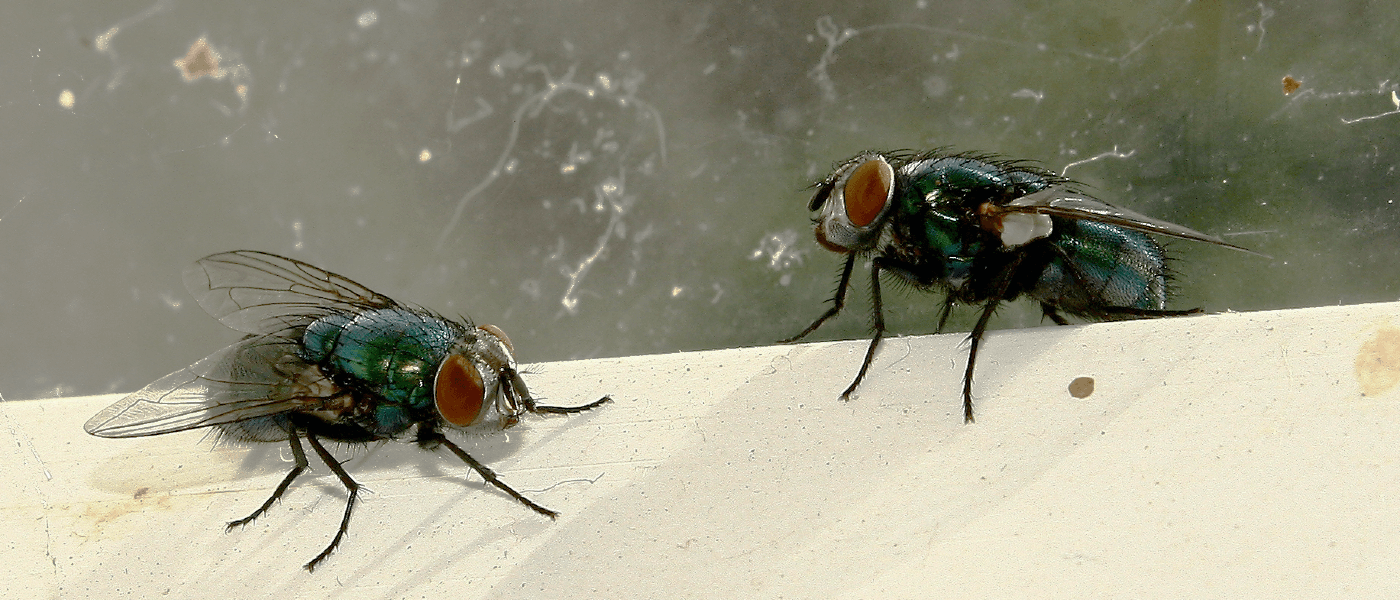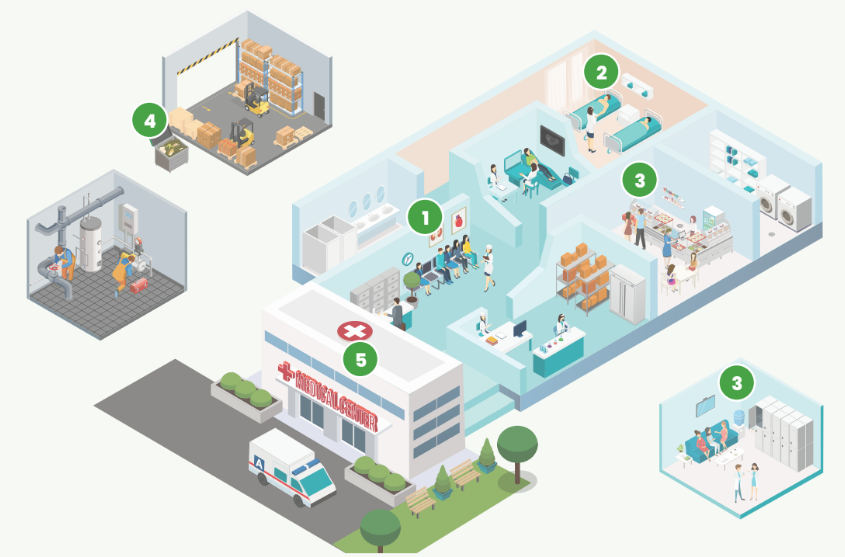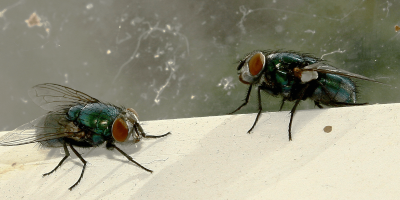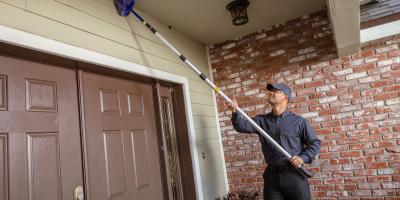Flies in Healthcare Staff Areas

Why Flies in Healthcare Staff Areas Need Immediate Attention
In healthcare environments, cleanliness often centers on patient rooms and clinical spaces. But behind the scenes, in break rooms, staff kitchens, and admin offices, an overlooked threat can emerge: flies.
Flies are more than a minor nuisance. In healthcare settings, they pose a serious risk to hygiene, can spread harmful bacteria, and challenge compliance standards. A small fly problem in a staff area can quickly grow and put your entire facility at risk.
Why Staff Areas Are a Target for Flies
Staff areas in healthcare environments, such as break rooms, food prep stations, and rest areas, are particularly vulnerable to fly infestations. These areas typically experience high foot traffic, inconsistent cleanliness, and warm temperatures, all of which create ideal conditions for fly breeding. Even small oversights, like an uncovered drink, leftover food, or an overflowing trash bin, can attract flies. Once inside, flies seek out moist, organic materials to lay their eggs. Their rapid reproduction can quickly lead to large infestations.
How Flies Threaten Compliance and Safety
Flies are mechanical vectors, carrying harmful bacteria like Salmonella and E. coli from contaminated surfaces to food prep areas, utensils, and even hands. While staff may wash their hands and sanitize regularly, bacteria carried by flies can still contaminate other surfaces, spreading infection even in well-maintained areas.
In healthcare settings, flies can easily spread contamination to critical patient areas where cleanliness is paramount. This includes patient rooms, food preparation areas, and spaces where staff handle medications or medical equipment. Flies pick up bacteria from high-risk zones such as sharps containers or medical trash and transfer it to areas where patients are vulnerable to infection, increasing the risk of Healthcare-Associated Infections (HAIs).
The presence of flies can lead to severe consequences for patient health, regulatory failures, and infection control violations. It may result in legal and financial penalties, failed audits, and potential loss of healthcare accreditation. Furthermore, if patients or their families spot flies, it can severely damage your facility’s reputation and patient satisfaction scores. Even a small infestation in one staff area can compromise the safety and cleanliness of the entire facility, putting both patient health and operational compliance at risk.

Managing Fly Risks Infographic
With proactive monitoring, these threats can be controlled. Our infographic shows how flies spread, their impact on hygiene and compliance, and prevention steps.
High-Risk Zones That Require Attention
Pests don’t just appear in obvious places. Many infestations begin in lesser-seen zones such as loading docks, utility rooms, and staff break areas, spaces that are not always included in daily cleaning routines but can still contribute to broader contamination issues.
Flies, for example, are frequently found near drains or kitchen prep areas and can carry pathogens from trash bins to sterile surfaces. Rodents may access facilities through small wall gaps or utility lines and contaminate storage areas with droppings and nesting material. A strong IPM program doesn’t just focus on patient rooms, it includes every part of the facility that could be a potential pest entry or breeding point.

Want to identify hidden risk areas in your facility?
Download our Healthcare Site Risk Map a free, visual guide to the top pest entry points across medical environments.
Implementing a Thoughtful, Low-Impact Pest Management Strategy
A low-impact IPM approach should aim to complement patient care, not interfere with it. Discreet services and digital reporting are essential for minimizing disruption while keeping track of pest trends and risk areas.
Cross-departmental awareness also plays a role. Janitorial teams, food service staff, and facilities management must work together to maintain consistent standards, quickly respond to signs of pest activity, and reduce attractants.
Building a Culture of Prevention and Awareness
Educating staff on pest prevention practices can enhance the effectiveness of IPM. Encouraging routine reporting, sharing best practices between departments, and reinforcing sanitation habits all contribute to stronger outcomes.
By taking a prevention-first mindset and fostering awareness throughout the facility, pest risks can be identified and resolved early, helping maintain a hygienic, compliant healthcare environment.
Work with a Pest Control Provider That Understands Healthcare
Implementing an IPM strategy tailored to healthcare requires an experienced provider that understands the complexities of medical environments. JP Pest Services trains its technicians specifically for healthcare facility work, ensuring minimal disruption and strict adherence to safety protocols.
Whether you manage a small clinic or a multi-campus hospital system, we help you stay ahead of pest risks and audit challenges.
Book a healthcare pest risk assessment today and discover how JP Pest Services can help reinforce your infection control strategy.



